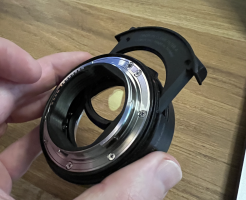I just bought an R10 as backup to my R6 and I wasn't happy about this lack; but then I think I understand why they did it.
I think first, lot of R10 user will mount the kit lens when purchasing and most likely will never change it, probably they maybe don't even have a second lens; so dust on sensor wouldn't be such a problem (and they probably wouldn't even notice the dust in pictures).
Second and much more important, the shutter curtains are way, WAY, WAAAAAYYY more delicate then the sensor itself, and Canon decided that a "not-so-pro-typical-R10-user" would most likely be less careful and delicate compared to a more advanced/pro user, and they could damage the shutter curtains easily; so they decided to leave the sensor exposed because it wouldn't be damaged if touched.
Me as a professional, shooting SLR's since 1999, every time i switch the lens on my R6 I'm SOOO careful, because there's the shutter exposed, and there's even not the mirror box, so the shutter is really, REALLY close to the lens mount, and touching and damaging wouldn't be so difficult for someone less caring then me (or simply the amateur user who, and it's not a crime, don't known how delicate those curtains are).
So I think I understand why they didn't included it; would be nice if they implement via firmware (leaving it disabled by default), and if you activate the shutter closure on turn off, show a message clearly explain that could be dangerous and that the user will take all responsibility when handling the camera without the lens.



